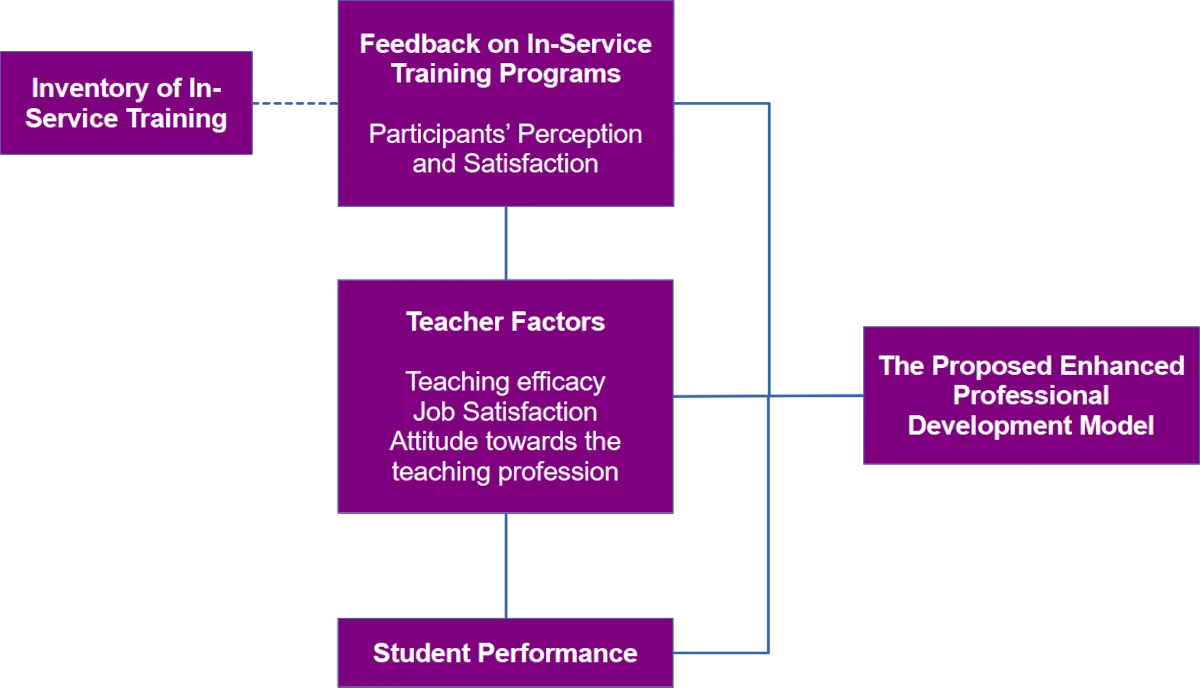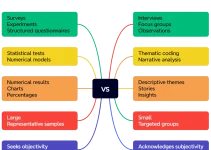Updated: October 12, 2025
This article shows an example of a conceptual framework. It demonstrates how a conceptual framework and the corresponding statement of the problem are organized and written in a dissertation. Take a look at how it is done, and try to make one for your paper. You may also use this in your thesis.
Table of Contents
You may be thinking about too many theories to base your study on. However, a conceptual framework is inbuilt on a theory or model that serves as the basis for your research. Once you have decided which theory to adopt, try to figure out if that theory can best explain the phenomenon with all the associated variables in your study. The example below illustrates how this works.
Example of a Conceptual Framework
This example of a conceptual framework zeroes in on teachers’ professional development activities by espousing the idea. main argument, or thesis that teachers’ classroom performance is a critical factor for student academic performance. The researcher based her assumption from Weiner’s Attribution Theory that external and internal factors can improve performance.
For example, students may attribute their academic performance to their teachers (external factor). In contrast, the teachers may attribute their teaching performance to in-service training (external factor) and perhaps their teaching efficacy, job satisfaction, and attitude towards the teaching profession (internal factors). These relationships are illustrated in Figure 1.

Statement of the Problem
The purpose of this study is to provide baseline data on in-service training for English, Mathematics, and Science Fourth Year High School teachers from the School Year 2006 up to 2010. Also, a professional development model for teachers is proposed.
Specifically, this study sought answers to the following questions:
- What are the most familiar in-service training activities among teachers? And what are their insights about these activities as to: (a) applicability in the classroom, (b) importance in the teaching profession, and (c) impact on student performance?
- What feedback do teachers have of the in-service training programs attended in terms of (a) perception, and (b) satisfaction?
- What are the teachers’ level of teaching efficacy, job satisfaction, and attitude towards the teaching profession?
- What is the performance of the fourth year high school students in their Subject Achievement Tests in three subject areas: English, Mathematics, and Science during the first semester of SY 2010-2011?
- Are the teachers’ perception and satisfaction regarding the in-service training programs predictors of their levels of teaching efficacy, job satisfaction, and attitude towards the teaching profession?
- Are the teachers’ levels of teaching efficacy, job satisfaction, and attitude towards the teaching profession predictors of their student performance in the Subject Achievement Tests?
- What enhanced professional development model for teachers can be developed on the basis of the results of this study?
Organized Flow of Ideas Characterize a Conceptual Framework
Now, you have learned how a theory is used and how the questions in the problem statement are formulated. Take note that the problem statement questions are arranged according to the flow of the conceptual framework.
First, it has questions on an inventory of in-service training activities, followed by the feedback. The next question is about teacher factors, then the results of student performance. The last question relates to the development of the enhanced professional development model.
Notice that all of the factors identified in the study serve as input to the final outcome of the study which is the enhanced professional development model. It is easy to conceptualize what the researcher is trying to incorporate in the training design for teachers’ professional development. It is a systematic representation of the intention, direction, and outcome of the study.
Can you make it? Yes, you can!
© 2015 January 19 M. G. Alvior




plss help me for my research its all about the effect of hand held devices and social media to the behavior of the stem student. plss help me ,i do not know how to make an SOP , conceptual frame work ,etc.
I have trouble till this time of my MSc. studies to design a comprehensive conceptual framework but this one is simple and easy to replicate however, there are no arrows showing the flow of the ideas, I found it difficult to follow. If you can include the directions of the arrows on the conceptual framework, it will be easy for students to espouse and replicate the idea. Thank you.
kindly help me come up with the conceptual framework am doing my research on,effects of tax revenue on economic performance
Dear NEK, please clarify what you want to do first by writing your statements of the problem. Example questions could be: 1) Is there a relationship between household decision making ability and gender?, 2) Is there a relationship between gender and the tendency to apply for a loan in Village Saving Loan Associations? Your conceptual framework depends on the issue you would like to work on. The purpose of your study should be crystal clear.